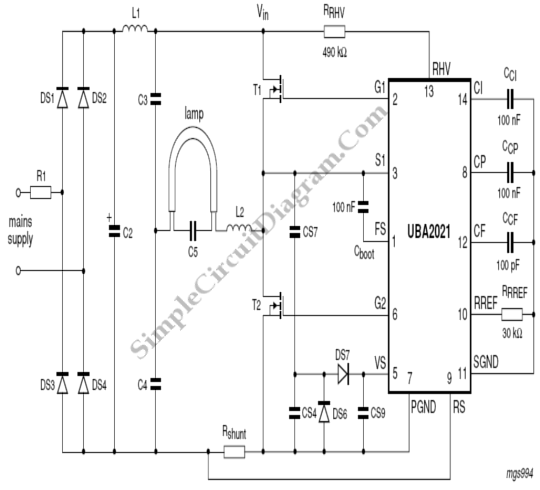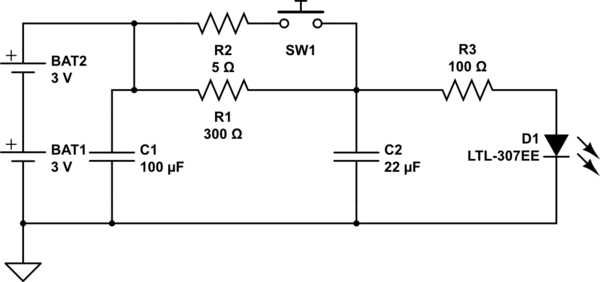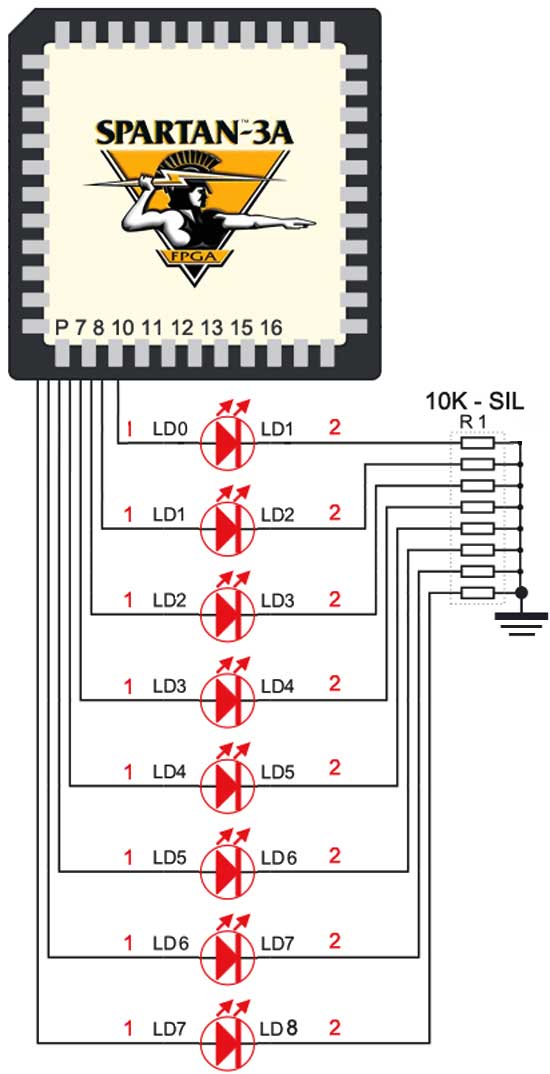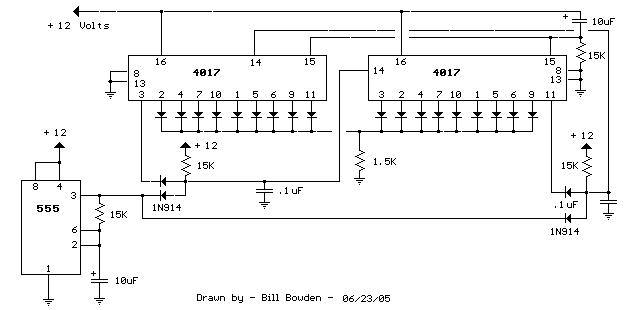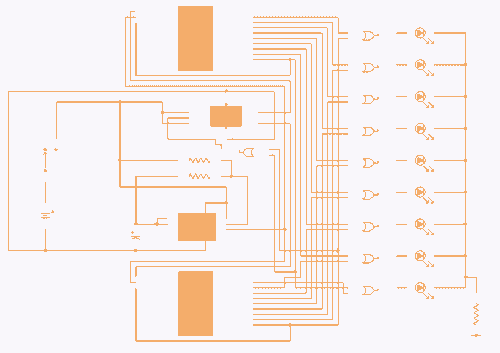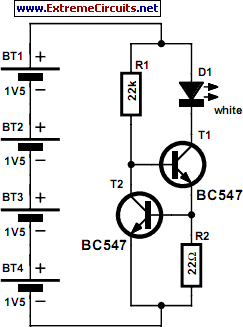
Regulated LED Lamp
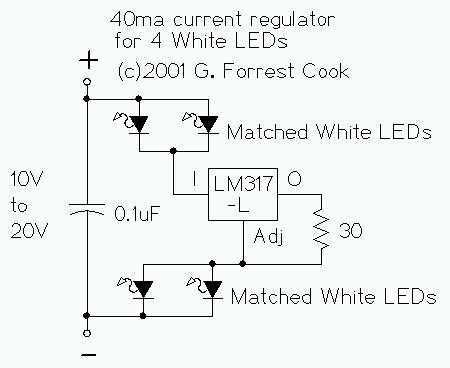
The LM317L and resistor act as a current regulator set to 40ma. Current flows from the battery through one pair of LEDs, through the regulator, through the other pair of LEDs, and back to the battery. The capacitor filters out noise on the power supply lines. The LED pairs must be matched so that the current through them is roughly equivalent. Small resistors could be placed in series with each of the four LEDs to improve the balance, but the parts count would go way up.
The described circuit utilizes an LM317L voltage regulator configured as a constant current source to drive two pairs of Light Emitting Diodes (LEDs). The LM317L is selected for its ability to provide a stable output current, which is set to approximately 40 mA using an appropriate resistor. The resistor value can be calculated using the formula \( I = \frac{1.25V}{R} \), where \( I \) is the desired current and \( R \) is the resistor value in ohms.
In this configuration, current flows from a power source, such as a battery, through the first pair of matched LEDs. The LEDs must be matched in terms of forward voltage drop and current rating to ensure equal current distribution and prevent any one LED from being overdriven, which could lead to failure. After passing through the first pair of LEDs, the current then flows through the LM317L, which regulates the current, maintaining it at the set value of 40 mA. The current then continues to the second pair of matched LEDs and returns to the battery.
A capacitor is included in the circuit to filter out noise from the power supply lines, enhancing the stability of the current supplied to the LEDs. This capacitor should be placed as close as possible to the power supply pins of the LM317L to effectively dampen any high-frequency noise.
To achieve better current balance among the four LEDs, small resistors can be added in series with each LED. This practice helps to equalize the voltage drops across each LED, compensating for any slight variations in their forward voltage characteristics. However, introducing these additional resistors increases the components count and may complicate the circuit design.
Overall, this current regulation circuit is suitable for applications requiring stable LED illumination, ensuring longevity and consistent performance of the LEDs while minimizing the risk of thermal runaway or unequal current distribution. Proper thermal management of the LM317L should also be considered, especially if the circuit operates for extended periods or at higher ambient temperatures.The LM317L and resistor act as a current regulator set to 40ma. Current flows from the battery through one pair of LEDs, through the regulator, through the other pair of LEDs, and back to the battery. The capacitor filters out noise on the power supply lines. The LED pairs must be matched so that the current through them is roughly equivalent. Small resistors could be placed in series with each of the four LEDs to improve the balance, but the parts count would go way up.
🔗 External reference
The described circuit utilizes an LM317L voltage regulator configured as a constant current source to drive two pairs of Light Emitting Diodes (LEDs). The LM317L is selected for its ability to provide a stable output current, which is set to approximately 40 mA using an appropriate resistor. The resistor value can be calculated using the formula \( I = \frac{1.25V}{R} \), where \( I \) is the desired current and \( R \) is the resistor value in ohms.
In this configuration, current flows from a power source, such as a battery, through the first pair of matched LEDs. The LEDs must be matched in terms of forward voltage drop and current rating to ensure equal current distribution and prevent any one LED from being overdriven, which could lead to failure. After passing through the first pair of LEDs, the current then flows through the LM317L, which regulates the current, maintaining it at the set value of 40 mA. The current then continues to the second pair of matched LEDs and returns to the battery.
A capacitor is included in the circuit to filter out noise from the power supply lines, enhancing the stability of the current supplied to the LEDs. This capacitor should be placed as close as possible to the power supply pins of the LM317L to effectively dampen any high-frequency noise.
To achieve better current balance among the four LEDs, small resistors can be added in series with each LED. This practice helps to equalize the voltage drops across each LED, compensating for any slight variations in their forward voltage characteristics. However, introducing these additional resistors increases the components count and may complicate the circuit design.
Overall, this current regulation circuit is suitable for applications requiring stable LED illumination, ensuring longevity and consistent performance of the LEDs while minimizing the risk of thermal runaway or unequal current distribution. Proper thermal management of the LM317L should also be considered, especially if the circuit operates for extended periods or at higher ambient temperatures.The LM317L and resistor act as a current regulator set to 40ma. Current flows from the battery through one pair of LEDs, through the regulator, through the other pair of LEDs, and back to the battery. The capacitor filters out noise on the power supply lines. The LED pairs must be matched so that the current through them is roughly equivalent. Small resistors could be placed in series with each of the four LEDs to improve the balance, but the parts count would go way up.
🔗 External reference
